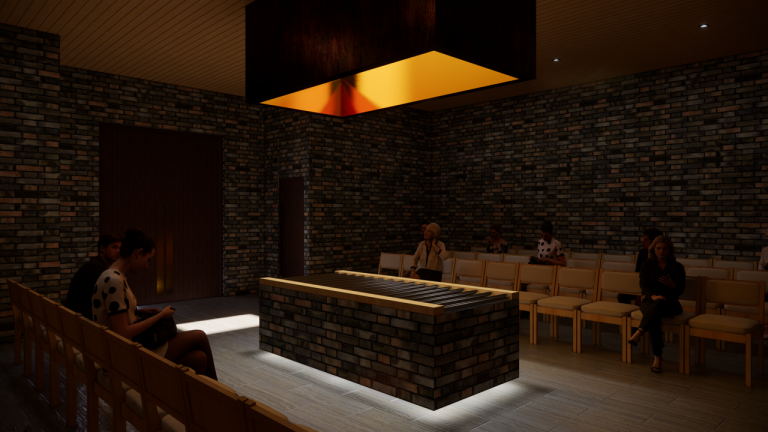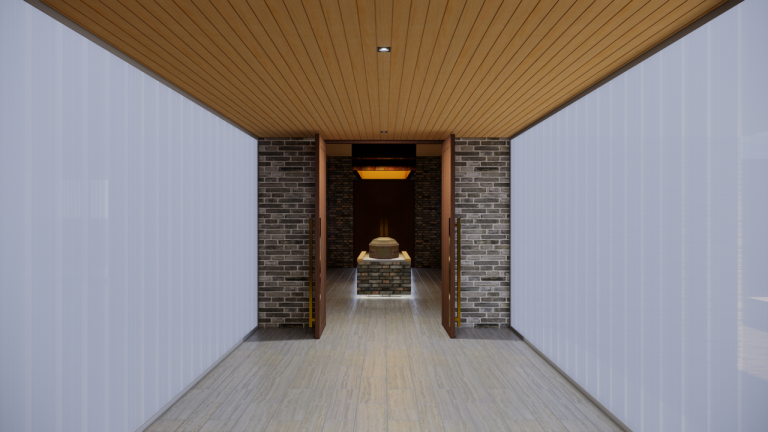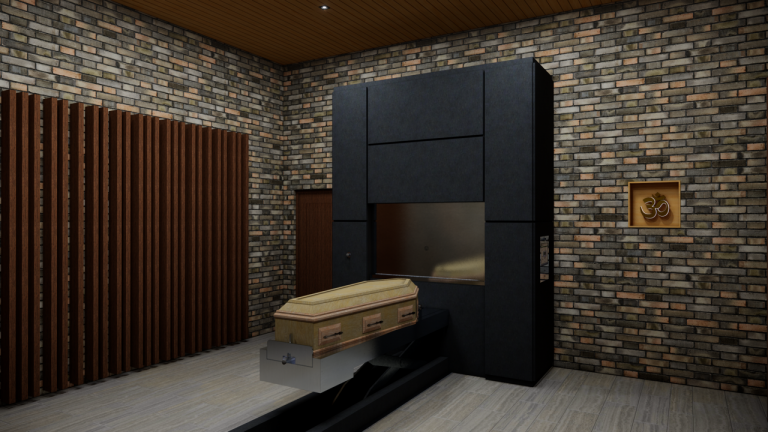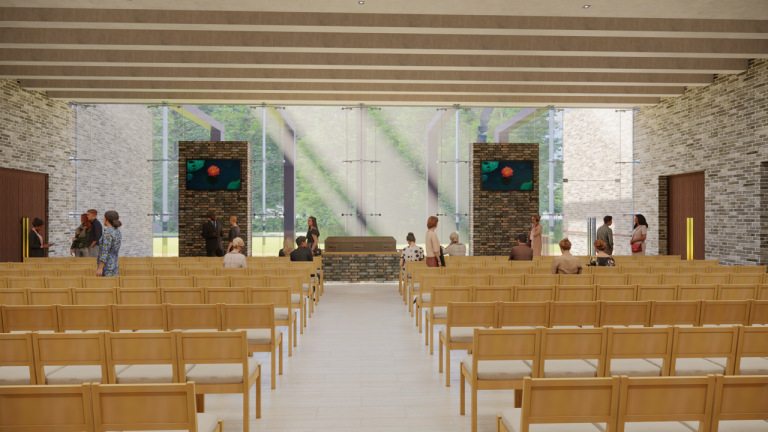AUM Crematorium
The Lea, Western Avenue, Denham, Uxbridge, UB9 4NA, UK




The crematorium building and associated facilities have been thoughtfully designed and specifically tailored to meet the needs of the community.
The proposed Crematorium facilities comprise:
- Waiting Rooms
These will provide shelter for attendees as they await the funeral ceremony. - Private Ritual Rooms for pre-cremation rituals
The private ritual rooms will grant the immediate family, close family and friends a beautiful area to observe the various pre-cremation rituals and the space to be able to properly circumambulate the body, rather than carry out these proceedings in the make-shift room of a funeral parlour. This will also remove the strain of rushing from the funeral parlour to the crematorium as all of the rites and observances will take place in one location. - Large ceremony halls
After the pre-cremation ritual, family members and the wider gathering of mourners will proceed into the ceremony hall, where a prayer service takes place. This is designed to accommodate up to one thousand people. It is designed with partitions to create separate halls for smaller funerals. This will eliminate the experience of mourners having to stand throughout the entire ceremony due to a lack of space. - Cremators
The facility will have three cremators, to ensure that the body of one’s loved one is committed to the cremator at the end of the funeral ceremony. - Separate Canteen Building (with dining, seating and showering facilities)
The canteen will house shower facilities and those for ritual purification. Family and friends may then take the traditional communal meal together. This tradition, which fewer and fewer people have been able to partake in due to the time constraints of driving back to the home of the deceased, will now be revived and will provide the time-honoured tradition of extending comfort and support to the family of the deceased. - The facility is designed to allow for 5-6 services per day, with a main hall that can be sub-divided to accommodate large and small gatherings. The proposals also include additional car parking, as well as a small number of coach parking spaces (for infrequent larger gatherings), to accommodate visitors to the site. The entire facility will be in proximity of the sacred grounds of the temple, lending auspiciousness and purity to the very grounds the cremation would take place on. Co-locating with an existing temple provides peace of mind, for everything that it represents to a Hindu family at one of the most difficult moments of life.
CLICK HERE to view the crematorium floor plans
The new crematorium will be designed around the traditional Hindu funeral rites or antyesti – the last samskara or rite of passage in the life of a Hindu. The crematorium will provide a series of ceremonial spaces where appropriate rituals can be performed. Whilst the rites surrounding a traditional Hindu funeral in India would last for 12 days, and comprise numerous peaceful ceremonies in various locations, this facility will provide a location for a ceremony encapsulating the key elements.
The coffin will arrive by hearse either unaccompanied or with only close relatives and be taken to a private ritual room. The open coffin is positioned on a platform oriented with feet facing due south. The ceremony then allows the priest and close relatives to perform various rituals such as aarti (the offering of light), preparing the deceased for cremation and the closing of the coffin.
Those mourners attending the public ceremony will arrive around an hour later, gathering in the waiting area outside the ceremony hall. The closed coffin is then positioned for the main ceremony, which will last around 45 minutes.
The coffin will then be taken from the main ceremony hall to a more intimate space where the cremator is housed. The committal of the body will be witnessed by a small number of mourners, with the lead mourner activating the automatic charger as the symbolic act of mukhagni (the lighting of the pyre). As this ritual must take place at the end of the service, it is essential that an incinerator is always available – this is not often the case in existing crematoria, where a body may await incineration for up to 72 hours after a funeral ceremony.
Once the coffin has been committed, the group will depart. The ashes will then be stored on site for collection by the family at a later date for dispersal in running water – this may be in the Ganges, or at an approved location in the UK.
The family of the deceased may also have opted to use the Sraddha hall to allow mourners to purify themselves and take part in a ritual meal prior to visiting the temple after the ceremony.
Ashes will not be scattered or interred on site, nor will there be any memorial facilities.
AUM Crematorium Copyright@ Aug 2022
Info@aumcrematorium.org